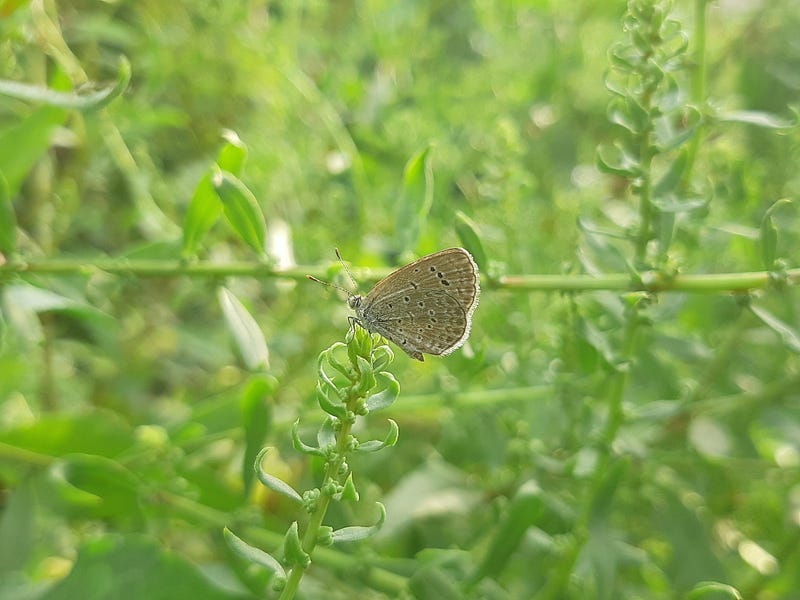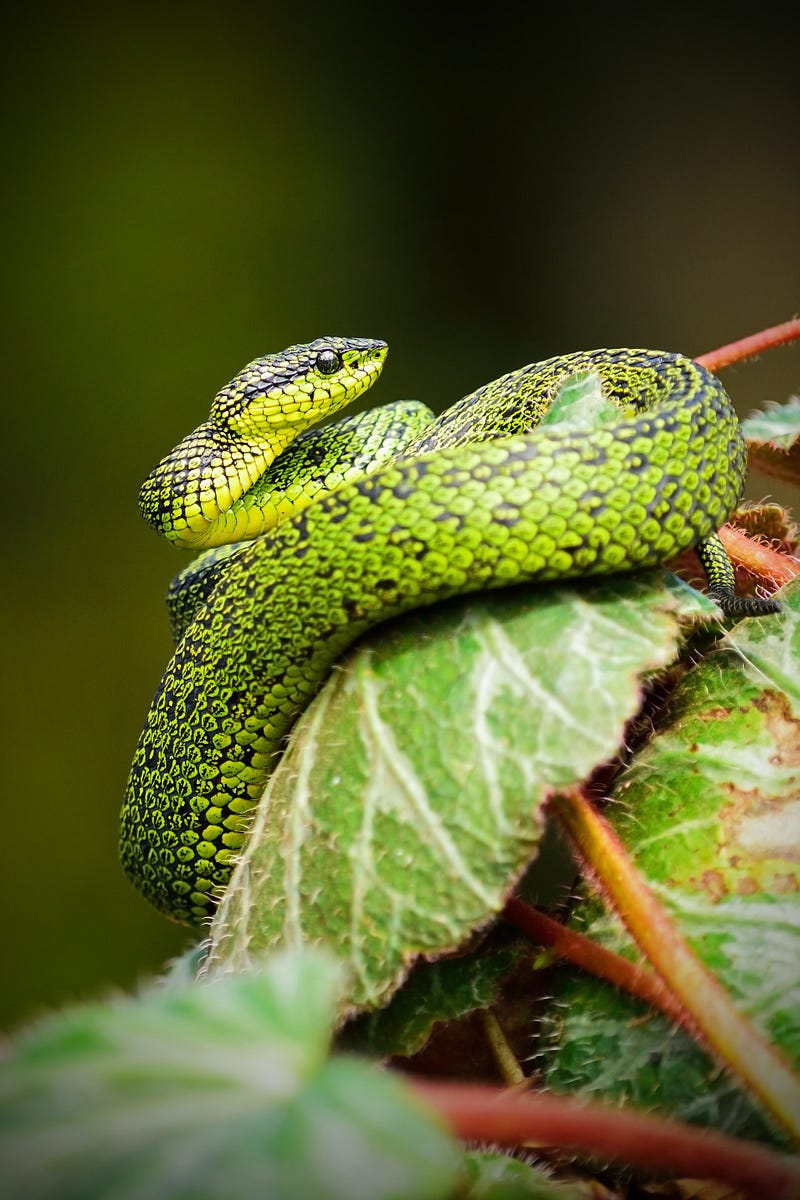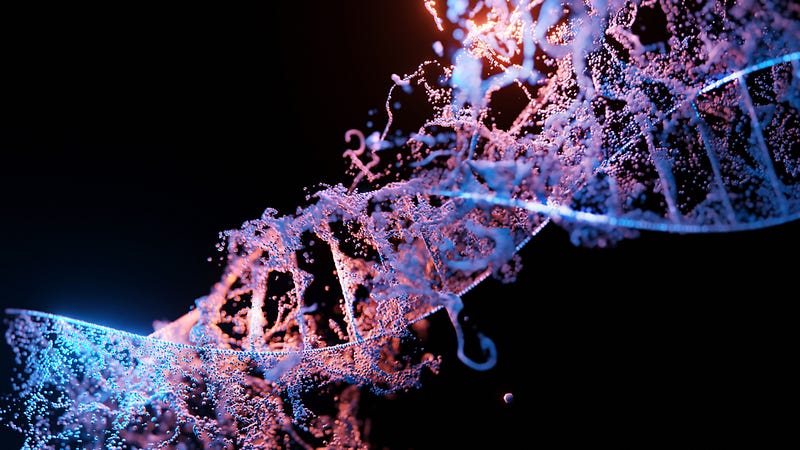The Science of Mimicry: Unveiling Nature's Deceptive Strategies
Written on
Chapter 1: Understanding Mimicry
Mimicry is an enthralling phenomenon within the diverse tapestry of the natural world. This adaptation allows one organism to resemble another or its surroundings. For instance, some insects seamlessly blend into their environment, while certain non-venomous snakes adopt the bright colors of their toxic relatives. This thrilling game of imitation is not merely for camouflage; it is a vital survival strategy shaped by the relentless forces of evolution. While mimicry is prevalent in nature, the underlying science is intricate and profound.
This essential aspect of evolution transcends mere tricks and disguises. It represents a strategy employed by various species to thrive and ensure their continuation.
The Essence of Mimicry: Survival and Evolution
At its core, mimicry is a straightforward yet profound concept: survival. Every organism, from minute insects to massive mammals, strives to live and reproduce. Nature’s harsh realities create a competitive environment, where those who can evade predation or deceive their prey gain an advantage. This is where Darwin's theory of evolution becomes relevant. It posits that traits enhancing survival and reproductive success become more prevalent over generations.
Consider an insect species where some individuals more closely resemble leaves. Predators will likely spot and consume the less convincing insects, allowing the leaf-mimickers to survive and reproduce. Over time, this trait becomes more common within the population, exemplifying natural selection, which drives evolution.
But where do these advantageous traits originate? They arise from genetic mutations—random changes in an organism's DNA that can affect traits. While most mutations are neutral or detrimental, some may confer a benefit. For example, if an insect mutates to resemble a leaf, its chances of survival improve, enabling it to pass on this trait to its offspring. Mimicry manifests in various forms, each serving distinct purposes.
Explore the fascinating world of mimicry in the video "Mimicry: A World of Imposters." This video delves into the various types of mimicry and their evolutionary significance.
Batesian and Müllerian Mimicry: Two Approaches to Survival
Batesian and Müllerian mimicry are two primary types of mimicry observed in nature. Both involve the imitation of signals to mislead predators, yet they function on different principles. Batesian mimicry occurs when a non-threatening species mimics the appearance of a harmful one. The underlying idea is that predators tend to avoid anything that appears dangerous or unappetizing. This allows harmless species to benefit from mimicking dangerous ones, essentially gaining a shield against predation. A well-known example is the viceroy butterfly, which imitates the toxic monarch butterfly's coloration; thus, predators avoid it, granting the viceroy protection without being toxic itself.
Conversely, Müllerian mimicry involves two or more harmful species that share similar warning signals. At first glance, this might seem counterintuitive—why would a dangerous species want to resemble another? The answer lies in predator learning. When predators encounter harmful species with distinct warning signals, they quickly learn to avoid them. This mutual reinforcement makes the learning process more efficient. Common examples include bees and wasps, which often share yellow and black banding patterns as universal danger signals.

Source: Wikimedia Commons
Batesian and Müllerian mimicry illustrate the remarkable ingenuity of evolution. By adopting these strategies, species enhance their survival prospects and perpetuate advantageous traits. This interwoven complexity in nature showcases how relationships evolve for the sake of survival.
Automimicry: Mimicking Oneself
While mimicry often involves one species imitating another, a captivating aspect is where an organism mimics parts of itself, known as automimicry or intraspecific mimicry. A classic example is found in certain snake species, which possess tail patterns that closely resemble their heads. When threatened, these snakes mimic head movements with their tails, tricking predators into attacking the tail instead of the more vulnerable head. This allows the snake to escape while the predator is distracted.

Photo by Alfonso Castro on Unsplash
Automimicry can also extend beyond visual deception. For example, some cicadas produce sounds that mimic the echolocation signals of predatory bats, effectively jamming the bats’ echolocation and enabling cicadas to evade capture. This demonstrates the versatility of evolutionary strategies, where the same mechanisms that enable one species to imitate another can also allow organisms to mimic their own body parts or sounds.
Aggressive Mimicry: The Predatory Twist
Aggressive mimicry provides a fascinating counterpoint to traditional mimicry concepts. Unlike other forms that primarily serve defensive purposes, aggressive mimicry focuses on predation. Organisms employing this strategy mimic harmless or enticing traits to deceive their prey or hosts. Predators often utilize this clever tactic, adopting appearances, sounds, or even scents that attract their intended victims.
For instance, certain anglerfish possess a lure on their heads that resembles a small fish or worm. When unsuspecting prey approaches, believing they’ve found an easy meal, they become prey themselves. Additionally, parasites like cuckoos employ aggressive mimicry by laying their eggs in the nests of other bird species, with their eggs mimicking those of the host species. This deception tricks the host bird into nurturing the cuckoo’s offspring, often at its own expense.
This adaptive behavior highlights nature's cunning and resourcefulness. By skillfully manipulating the rules of survival, aggressive mimics gain an edge, ensuring their continued existence.
The Evolutionary Mechanics of Mimicry
The science behind mimicry’s evolution encompasses various factors, including genetic variation, natural selection, and environmental influences. Genetic variation forms the foundation for the development of mimicry. Random mutations in an organism's DNA can lead to novel traits.

Photo by Sangharsh Lohakare on Unsplash
While most mutations are neutral or harmful, occasionally a mutation proves advantageous. For instance, a mutation might result in an insect resembling a leaf or twig, making it harder for predators to spot. This enhanced concealment improves its odds of surviving and reproducing, leading to the trait becoming more prevalent over generations.
Natural selection acts as a filter in this process, favoring traits that enhance survival and reproductive success. In the context of mimicry, organisms that excel at deceiving predators or attracting prey are more likely to thrive and pass on their effective mimicry traits to their descendants.
Environmental pressures also influence the trajectory and pace of mimicry’s evolution. Changes in the environment, such as shifts in climate or the introduction of new species, can alter the effectiveness of mimicry. For example, if a predator evolves to better differentiate a mimic from its model, the mimic must adapt and enhance its deceptive traits to survive.
All these elements converge to create the rich and diverse landscape of mimicry observed in nature today. It is a dynamic process, constantly evolving to meet the challenges of survival.
Mimicry serves as a vivid illustration of the wonders of evolution and the diversity of life on Earth. Studying this phenomenon reveals intriguing insights about nature and deepens our understanding of how life adapts and thrives in a constantly changing world.
The video "The Psychology of Mimicry" explores the cognitive mechanisms behind mimicry and its implications in nature and behavior.